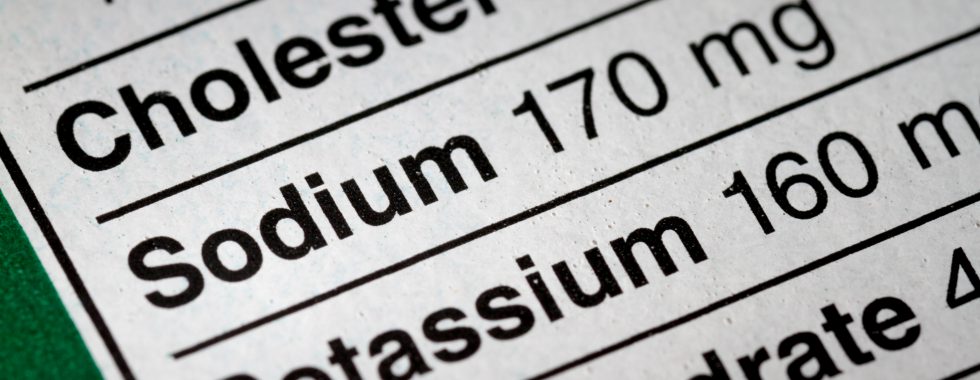Your Guide to FDA Supplement Label Requirements
Governed by The Food and Drug Administration (FDA), dietary supplement labeling requirements are complex. Manufacturers must comply with a set of strict governmental regulations to keep consumers informed about what they’re putting into their bodies. To help you navigate the complex landscape of FDA regulations, here is a guide to FDA guidelines on supplements labels.
What Qualifies as a Dietary Supplement?
First things first, which consumer products does the FDA consider as dietary supplements? According to the FDA, a dietary supplement is a vitamin, mineral, herb, or any other botanical amino acid or dietary substance meant to be consumed by people to increase their total nutritional intake. Therefore, if a product comprises at least one of the above mentioned, its labels must adhere to FDA requirements.
Supplement Label Regulations
While Paragon Laboratories can help to prepare the supplement facts panel for your product(s) upon request, we also recognize that brands want to stay informed on the labeling requirements. Our goal is to help you stay educated by providing the following details.
Supplement label information occurs in two locations on the product’s packaging: the front-facing label panel and the informational panel. The front label panel is the side consumers are most likely to see as they browse through an aisle at their retail store or a search results page on an eCommerce platform, like Amazon. The information panel most often appears directly to the right of the front panel and contains more technical details such as supplement facts, ingredients, and the manufacturer’s name and address.
The FDA-compliant label requires five specific pieces of information be listed:
- Statement of identity: This is the name that appears on the front label panel or principal display panel. This is the federally regulated or specified name.
- Net quantity of contents statement: This informs consumers of the amount of dietary supplements contained in the package. This section would be found in the bottom 30% of the principal display panel. You need to state the net quantity in either weight, numerical count, measure, or a combination of the three.
- Supplement Facts Panel: This section is where all the dietary ingredient names and corresponding quantities of each active ingredient per serving are listed.
- Inactive Ingredient list: You need to list all the ingredients used to manufacture the supplement, including the inactive ingredients. This list is placed below the supplement facts panel and must appear prominently.
- Name and place of business of the manufacturer, packer, distributor: Typically placed below the ingredient list, this section should clearly show the name, city, state, and zip code of the producer, packer, or distributor.
Supplement Facts Label Requirements
The Supplement Facts component of a supplement label possesses the most significant and elaborate requirements. All supplement fact labels must include the following:
- Serving size info: You must indicate the names and quantities of the dietary ingredients present in your product. A serving of a dietary supplement is equivalent to the maximum amount recommended on the label for every occasion. For example, if your product recommended amount is 1-3 teaspoons, then the serving size is 3 teaspoons. The section should also indicate the number of servings in the container.
- Total Calories: When present in measurable amounts, you must list the number of calories per serving.
- Name and Quantity of every active ingredient: You must list each ingredient’s name in the supplement and indicate the quantity measurements. These measurements can be listed as g, mg, mcg, mcg RAE, and IU.
- Calories from and types of fat: When present in measurable amounts, you must list the calories from fat, cholesterol, saturated fat, total fat, polyunsaturated fat, and monounsaturated fat.
- Critical Components: When present in measurable quantities, the FDA requires the manufacturer to list the following with matching daily values. These critical components include sodium, total carbohydrate, dietary fiber, sugars, protein, Vitamin A, Vitamin C, calcium, and iron.
- Percentage daily value (DV) on dietary ingredients: You must declare the daily value of a dietary ingredient in a supplement’s serving. To calculate the %DV value, divide the quantitative amount by the weight established in the DV for the specified dietary ingredient and multiply it by 100. Current daily value amounts can be found on the FDA’s website.
- Common names only for ingredients with no daily value: If the FDA has not established a daily value for a dietary ingredient, you must use its common name.
Supplement Facts Labeling Formats
The FDA allows for a variety of supplement facts formatting depending on the supplement type, ingredients present, and intake frequency. They offer an extensive list of examples that contain the different format assortments you can use to design your own supplement facts. Keep in mind that no matter what type of dietary supplement you plan to manufacture, you will always need an FDA-compliant label. Failing to follow the requirements for dietary supplement labeling can result in corrective action being taken by the FDA.
How Paragon Laboratories Can Help
Equipped with our 50+ years of industry experience, Paragon’s team of experts offers a label proof process that double-checks your supplement label is tailored to comply with the requirements set forth by the FDA. We vet every claim to ensure your dietary supplements can be sold throughout the United States. Ready to start your supplement brand? Contact us today and get a free quote.



